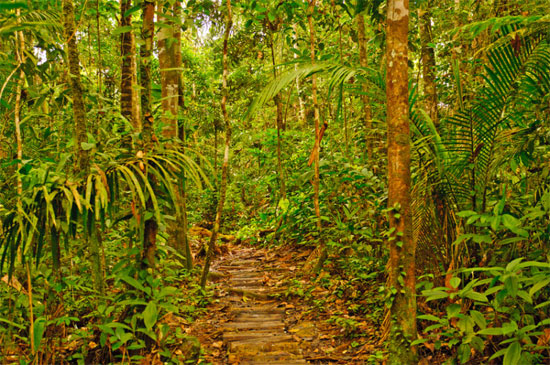Western Amazon is threatened by oil pollution
(new study) - A new study of polluted areas shows that the West Amazon region, an extremely bio-cultural and culturally diverse area, may have been contaminated by widespread oil pollution during the past 30 years. This study will be presented at the Goldschmidt conference in Sacramento, California.
Most of the world's tropical forests have oil and gas reserves. Oil production began in West Amazon in the 1920s and peaked in the 1970s, but global demand is increasing, which is now stimulating a new growth in oil and gas exploitation. . About 70% of Peru's Amazon region has been exploited for oil and in the mid-1970s and 2009.
For the first time, a group of Spanish researchers collected a database of chemical analyzes carried out in the Western Amazon region over the period from 1983 to 2013. These analyzes belongs to various sources, including public agencies and Peruvian oil companies. Although these research results still need additional support, this result has also increased significant concerns.

Researcher Raúl Yusta Garcia describes the findings:
'We looked at 18 samples of wastewater from 10 different branches of the Amazon River. We were able to retrieve the analysis results over a 30-year period, from 1983 to 2013, allowing us to evaluate the variation of nine different pollutants, such as lead (Pb), mercury (Hg) and cadimi (Cd). We found that 68% of the samples had lead concentrations above the allowable limits of Peru, and 20% of the samples had concentrations of cadmium exceeding the limit.
We can also compare pollution levels upstream and downstream of some waste locations. With some samples, we found that the average chlorine concentration was 11 times higher in the downstream part than in the upstream wastewater. Pollution from mining and rich mining declined in 2008, but the danger is increased demand causing pollution to increase. '
Lead researcher, Antoni Rosell-Mele added:
"There are no published studies to mark that, reporting the pollutant impact of oil exploration activities in secluded primitive rainforests. Our research shows that pollution The concentration of pollutants increases not only because of the oil spill, but also due to the drilling and exploitation process, these processes are not effectively monitored and monitored. In remote areas until now, some of these pollutants can enter the human food chain and certain areas affected by oil spills on the ground that are providing shelter. For wildlife, there are many species at risk of extinction '.
- 80% of fish in the Amazon River have plastic in the stomach
- Amazon's freshwater ecosystem is sensitive to environmental degradation
- The video rarely shows the original tribal people in the Amazon forest
- Discover an isolated tribe with the world in the Amazon forest
- 'Graveyard' Western electronic waste in Africa
- The higher the price of gold, the more destroyed the Amazon forest
- Terrible mysteries in the Amazon jungle
- Shocking photos of the Amazon forest burst into record speed
- Beautiful Amazon natural forest comes to awe
- Al Qaeda threatened to terrorize the website of Western Europe
- Dong Nai: Mangrove animals are threatened
- Why does the Amazon River longer than 6,000km without a bridge spanning?
 Is the magnetic North Pole shift dangerous to humanity?
Is the magnetic North Pole shift dangerous to humanity? Washington legalizes the recycling of human bodies into fertilizer
Washington legalizes the recycling of human bodies into fertilizer Lightning stone - the mysterious guest
Lightning stone - the mysterious guest Stunned by the mysterious sunset, strange appearance
Stunned by the mysterious sunset, strange appearance